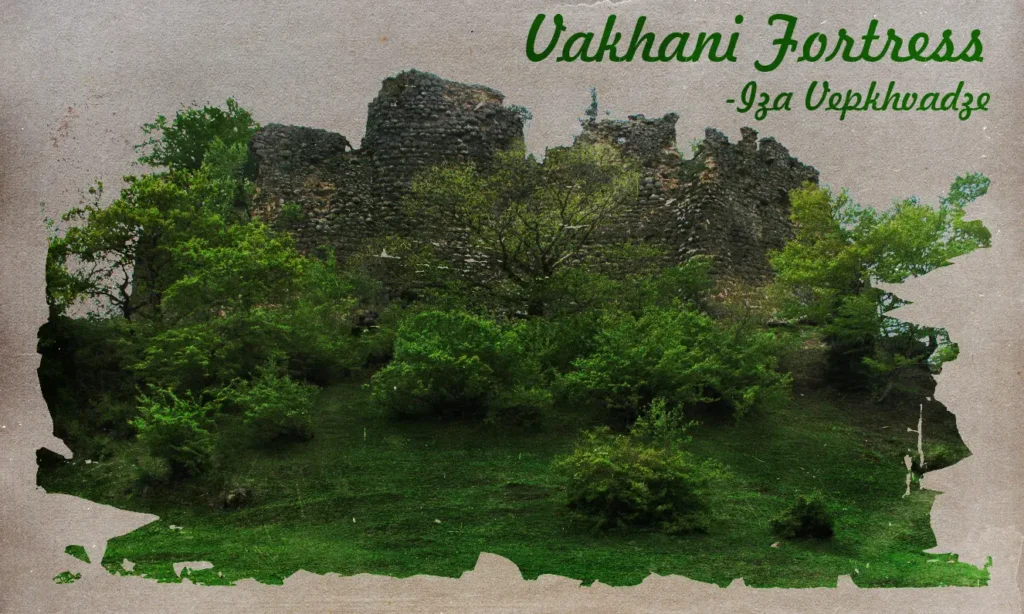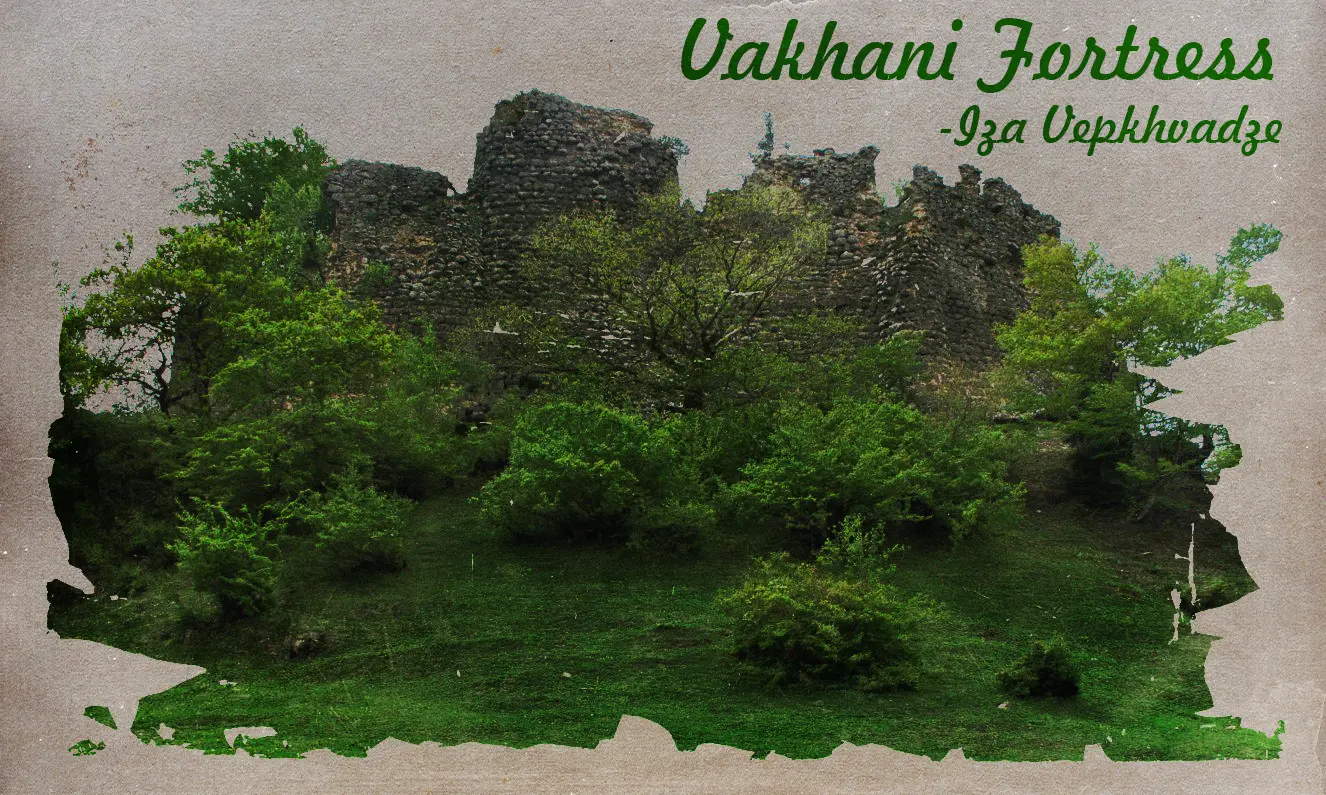
Author: Iza Vepkhvadze
The historical roots of Kharagauli and its inhabitants trace back to time immemorial. People have lived on its territory since the Early and Upper Paleolithic eras, with ancient archaeological finds discovered across Kharagauli. The municipality is abundant in historical monuments, including churches, monasteries, castles, towers, and defensive structures.
This time, we delve into the Vakhani Fortress, a significant historical site. According to historical sources, situated to the northeast of the village of Vakhani, atop a high mountain, the Vakhani Fortress is a monument dating back to the 10th-11th centuries. This dating is partly based on Ivane Javakhishvili’s account of David Agmashenebeli (the Builder) spending a night at the fortress, a detail also noted by writer Konstantine Gamsakhurdia in his book “David Agmashenebeli,” indicating the fortress predates David Agmashenebeli’s reign.
In the 16th and 18th centuries, the Vakhani Fortress was a crucial border military-strategic point between the Kartli and Imereti kingdoms. One road led from Vakhani to Kartli through Likhi and another to Meskheti through Likinjavri. Ivane Javakhishvili reports that in the winter of 1120, David Agmashenebeli, coming from Abkhazia, passed through with his retinue.
Russia, aiming to dominate the Transcaucasus, showed particular interest in the Vakhani Fortress. The Russian diplomat Tolichanov mentions one of the first Vakhani fortresses in his descriptions of the Imeretian kingdom’s fortresses.
Throughout the 18th century, the fortress endured relentless attacks by the Ottoman Leks. In 1774, a 4,000-strong Lek-Ottoman army invaded the Imeretian kingdom via Vakhani. The conflict commenced on February 6 near the Chkheri fortress and concluded with the enemy’s total defeat at the Vakhani fortress.
A dreadful tragedy unfolded near the Vakhani Fortress in the autumn of 1785 when Omar Khan invaded Georgia with a 20,000-strong army. Following a fierce battle on November 1, 1785, Omar Khan seized the Vakhan Castle. Over 700 valiant defenders were slaughtered, and the castle’s owner, Ivane Abashidze, was captured and tortured. Legend states that the bloodshed reached the Vahanuri River, hence the name Nasiskhlari (Bloody).
A related legend tells of Ivane Abashidze, the fortress’s owner, who had two beautiful daughters. Omar Khan was denied marriage to one of them and decided to attack Abashidze’s family within the fortress. Ivane Abashidze’s son-in-law, Kandelaki, convinced Omar Khan to spare his family in exchange for help capturing the fortress. Ultimately, the Leks killed Ivane and his wife, sparing only a chosen brave man and Ivane’s daughters.
According to folklore, when the Leks reached Mount Lomi, they intended to sacrifice the brave man who jumped from the cliff and managed to escape and reach the village of Marelisi, inspiring a folk poem about the ordeal.
Locals came up with the following folk poem about Omar Khan:
“Fortress Vakhan high,
Below base – rock.
When came Omar Khan,
Jumped down.
He immediately an order gave,
To villages Chrdili and Nebodziri
All who are more than twenty years old,
Down bring
Good girls – brides
Sit down me on my knees…” (literary translation)
By autumn 1785, repeated barbaric invasions decimated the fortress and its surrounding population. Yet, a watchtower dating back to the 6th and 8th centuries still stands near the fortress, a testament to its enduring legacy.
From 1801, after the Kartli-Kakheti kingdom’s incorporation into Russia, the Vakhani Fortress served as a negotiation site between Russian and Imeretian kings. A significant meeting in April 1804 between Pavel Tsitsianov and Solomon II led to the Treaty of Elaznaur, placing the Imeretian kingdom under Russian protection. The fortress, however, was not rebuilt after its final battle.
Experts regard the Vakhani Fortress as among the finest early-period fortresses. It is notable for its processed cold rock stone and the design of its formidable quadrangular tower. Despite damages, the fortress’s grandeur, strategic design, and architectural brilliance remain impressive to this day.


